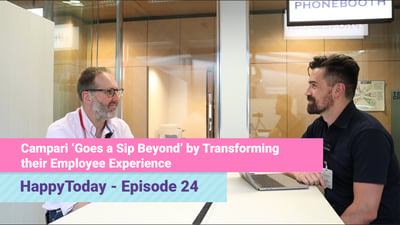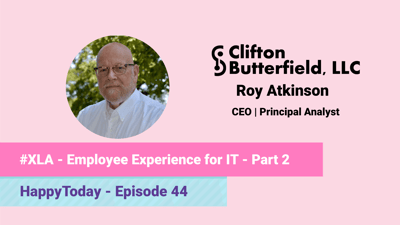Employee experience is a big trend in ITSM, and Campari’s CIO is aiming to put this concept at the heart of how his IT department operates.
Culture is still the biggest factor affecting change in IT, due to SLAs (Service Level Agreements) still being the main source of measurement.
Impacting this mindset creates the foundation for digital transformation, leading to building a better employee experience.
Currently, your IT service results may appear to be on target – due to SLAs – however, your employees are impacted negatively, witnessing a negative employee experience leading to lost work time and productivity, as well as their original issue possibly not being resolved.
Using XLAs (Experience Level Agreements) are the key to building a truly impactful employee experience. SLAs need to be left in the past as they are outdated metrics that are not measuring how your consumers truly feel about services and experience.
With HappySignals measurement tool and experience data, you can begin to learn what problems are leading to a negative experience for your employees, as well as what makes them happy when it comes to IT services.
[Without Experience Data] “I would feel very, very exposed talking to my Business stakeholders around the service that we are providing as an IT organization” – Chris Woods, Campari CIO
At first, Experience Data can be incredibly daunting when you initially receive service responses. Expect honest feedback from your end-users and don’t run away and hide when you see information that isn’t pleasing.
It is important to share results with other members of your IT organization and gain collective input on areas that need to be improved. Use the information you have obtained as an eye-opener into what your employees are really experiencing.
By creating a better experience will make your employees want to consume more. Therefore, creating a positive employee experience can help strategically drive digital transformation, as well as lead to better adoption of technologies.
Employee Experience and experience data can then be used to prove business value instead of IT being seen as a cost-unit.
Watch a demo now and see how HappySignals can help you.



